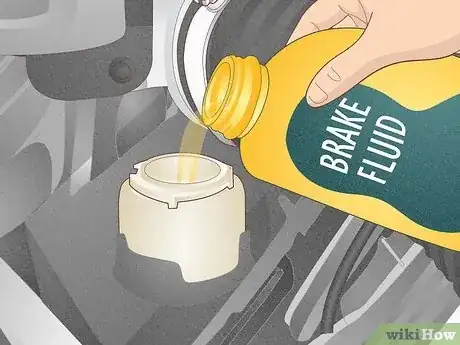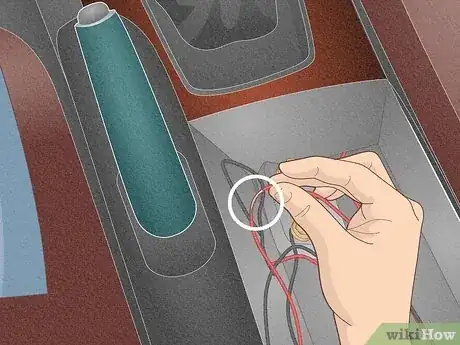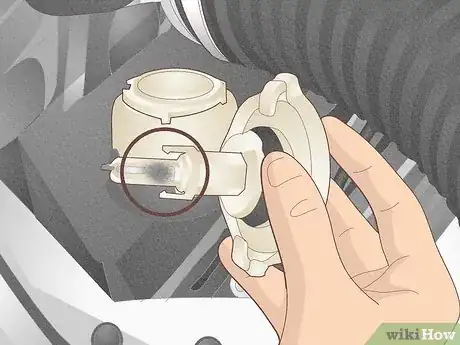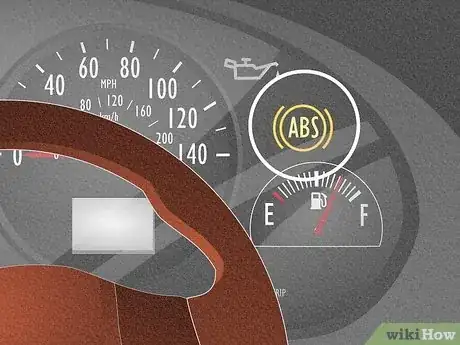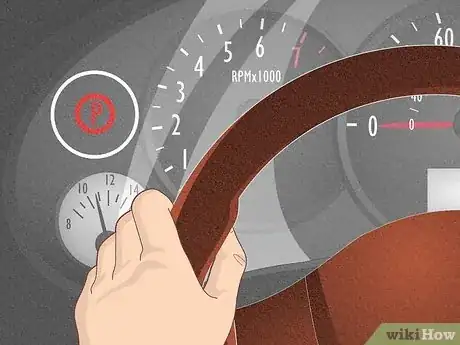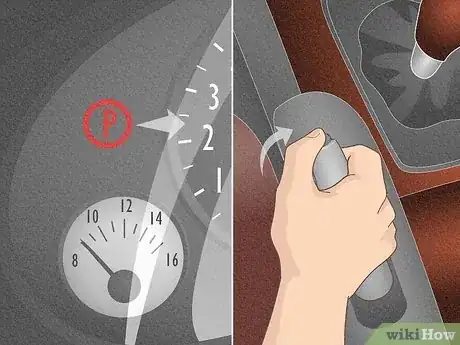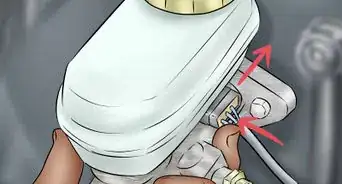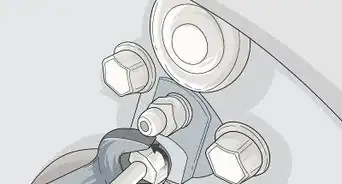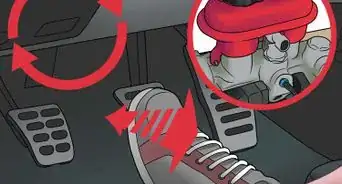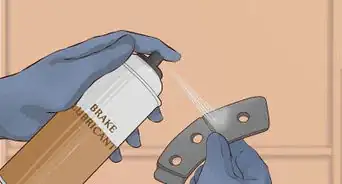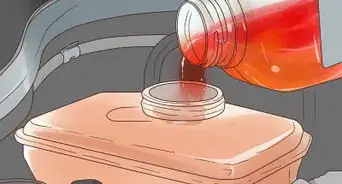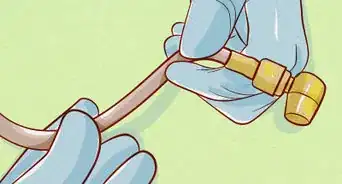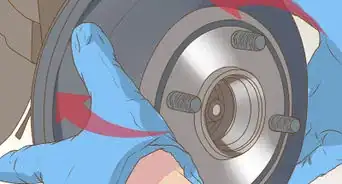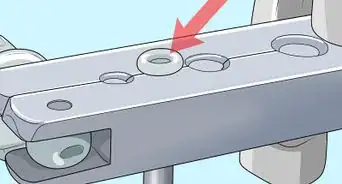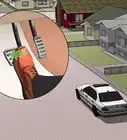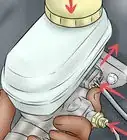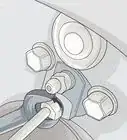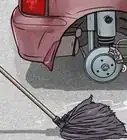This article was co-authored by wikiHow staff writer, Devin McSween. Devin McSween is a wikiHow Staff Writer. With a background in psychology, she has presented her research in social psychology at a variety of conferences and has contributed to several manuscripts for publication. At wikiHow, Devin combines her love of writing and research with the goal of bringing accessible information to wikiHow readers that will help them learn and grow. She earned her BS in Psychology from the College of Charleston.
There are 7 references cited in this article, which can be found at the bottom of the page.
This article has been viewed 1,169 times.
Learn more...
You’re leisurely driving down the road when you see your parking brake light illuminating your dashboard. You swear you put your parking brake down, so how can you get rid of this warning? In this article, we’ll go over several different ways to troubleshoot why your parking brake light might still be on. Then, we’ll answer your questions about what the parking brake light means and what to do when it comes on as you’re driving.
Things You Should Know
- Double check that your parking brake is fully disengaged.
- Fill up your brake fluid reservoir with brake fluid if it’s below the max line.
- Look underneath your parking brake for loose and frayed cable connections. If you see any, take your car to a mechanic to fix them.
- Unplug the brake fluid sensor below the brake fluid reservoir to see if the light turns off. If it does, contact your mechanic to replace the sensor.
Steps
Resetting the Parking Brake Light
-
1Check that the parking brake is disengaged. It might seem obvious, but the first thing to do is make sure that the parking brake is switched off. Whether you have a parking brake with a hand lever, floor pedal, or electronic switch, make sure it’s in the off position. A parking brake that is even slightly nudged into the on position can trigger your light to come on.[1]
- After ensuring that it’s disengaged, turn your car off and on again. If your parking brake light is still on after idling for a minute, troubleshoot further with the methods below.
-
2Fill up on brake fluid if it’s low. This is one of the most common reasons why your parking brake light stays on or flickers as you drive. While the parking brake light’s primary job is to warn you that it’s still engaged, it can also come on when your regular brakes need more fluid. When it’s low, you might notice that your brake doesn’t resist you as much or feels soft and spongy when you press it down.[2]
- To check your brake fluid, turn off your car, let it cool, and open the hood. Find the white fluid reservoir on the driver’s side, which is usually above the master cylinder. If the fluid is below the max line, fill it back up with the fluid specified for your car. Then, let your car run to see if the light turns off.
- Spongy brakes and low fluid can also be a sign of a leak. Check underneath your car for colorless, dripping fluid. Leaks often come from under the wheels or near your brake line. If you’re comfortable, fix the leak yourself, or take your car to a mechanic.[3]
- If your brakes are squeaky or your car pulls off to one side, it’s also a good idea to check your brake pads. If they are thin and well worn, replace them.
Advertisement -
3Check your parking brake switch for loose, damaged wires. If adding brake fluid doesn’t turn off your light, your parking brake switch might be faulty. Look for the switch below your parking brake, pulling up the driver’s side floor mat or middle console if you have a floor pedal or hand lever. If you see any frayed or loose wires coming out of the brake, take your car to a mechanic to get it checked out.[4]
- To confirm that you have a faulty switch, use a multimeter to test the switch’s continuity when the parking brake is engaged.
- Your parking brake switch sends a signal to your car when the parking brake is on or off.
-
4Determine if the brake fluid level sensor is faulty. The brake fluid sensor notifies you when your brake fluid levels are low. If it’s damaged, it might keep your parking brake light on. With your car off, look for the sensor under your car’s hood. It’s usually located under the brake fluid reservoir and looks like a black electrical connector. Unplug the sensor and turn your car on. If the light turns off, the sensor is likely faulty and needs to be replaced by a mechanic.[5]
-
5See if the anti-lock braking system (ABS) light is also on. If you notice “ABS” lit up on your dashboard, or none of the other solutions reset your parking light, there might be an issue with your ABS system. The ABS system is made up of various parts and sensors that help prevent your wheels from locking up when you make a sudden stop. Because it’s a pretty complicated system, go to your mechanic to get your car checked out.[6]
References
- ↑ https://repairpal.com/parking-brake-warning-light
- ↑ https://youtu.be/hcoHhD9T5bE?t=46
- ↑ https://youtu.be/WkWHWPl5hxs?t=66
- ↑ https://youtu.be/shAFq2EGPeM?t=111
- ↑ https://youtu.be/shAFq2EGPeM?t=216
- ↑ https://www.popularmechanics.com/cars/car-technology/a461/how-to-fix-anti-lock-brakes/
- ↑ https://repairpal.com/parking-brake-warning-light
- ↑ https://youtu.be/BZD2GPowIBk?t=13

